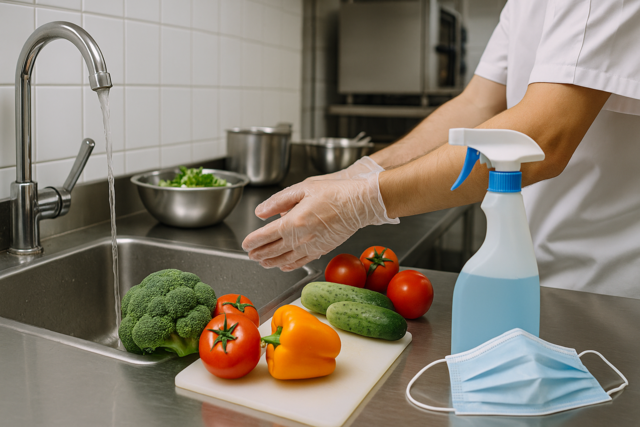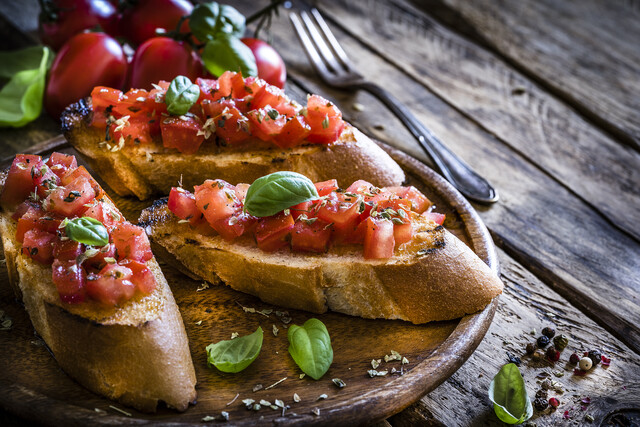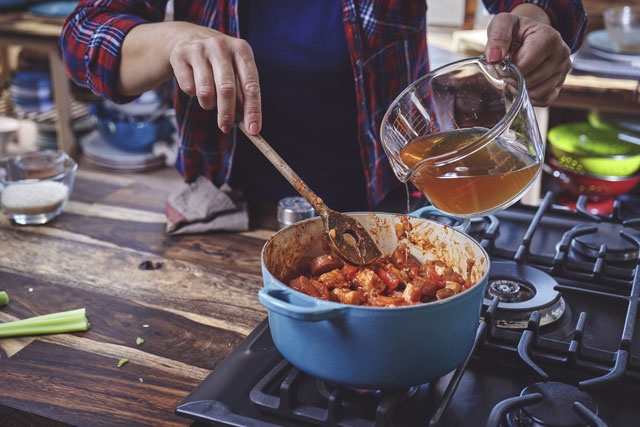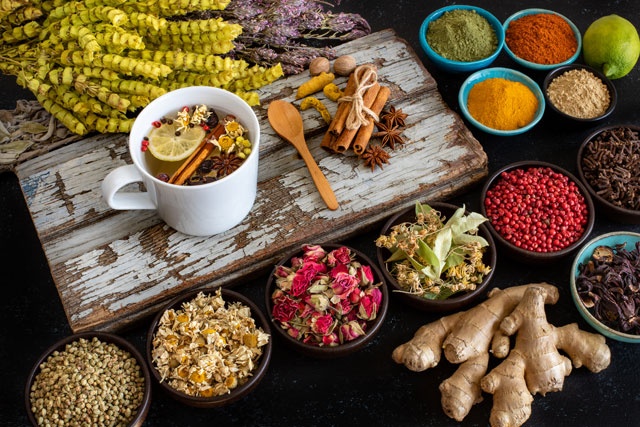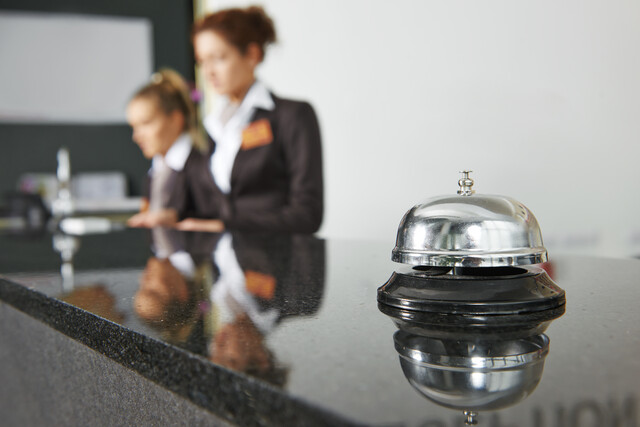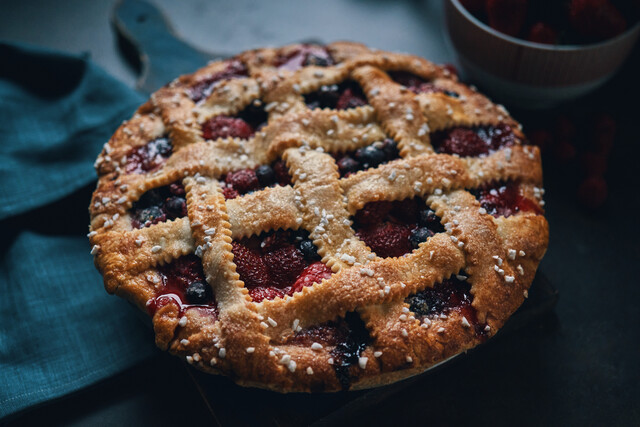In the 1800s, more and more women began having their babies in hospitals, instead of at home, with mixed results. The spread of childbed fever became rampant, as doctors moved from infected patients to healthy ones without washing hands, spreading the germs around and making healthy people sick.
Doctors, including Louis Pasteur, had to work for decades to convince others that a simple act like washing hands between patients really could save lives.
Back in Pasteur's day, water would have to be boiled in a pot to make it warm enough to kill germs, and people had to wash up in basins. Nowadays, we have hot, running water nearly everywhere, but people still fail to wash hands properly, which allows bacteria to move freely from one place to another and right into the food supply. Since most of these germs don't affect the smell, taste, or appearance of food, we have no idea we have allowed the little organisms into our body until we get sick.
When to wash
So, if we know that washing hands is the single best way to prevent the spread of germs, how much washing is enough? There are some pretty basic guidelines for when to wash -- basically any time you touch something that's likely to carry germs, and always wash before touching any food.
Be sure to wash after handling trash, raw meats, after using the bathroom, changing diapers, tending to a sick person, blowing your nose, sneezing and coughing, and after touching animals (especially any kind of lizard or bird).
If you are a restaurant manager, and you want to be sure your employees are washing their hands often, one way to be sure is to keep an eye on your sinks. First of all, hand-washing sinks must be easily accessible at all times. In other words, if there is a mop bucket parked in front of the sink during an entire shift, that's a good hint that no one is using that sink to wash hands. Also, sinks should not have other items stored in them that obstruct peoples' ability to wash hands. For example, a big bucket of dishwater standing in the sink is an obstruction and a health hazard. As we mentioned above, standing water is a breeding ground for germs. Sinks with clogged drains are also a problem--clogs must be fixed immediately. Also check your water flow. If the faucets are not working properly, if they drip, or if the waste pipe is leaking, this is a health issue that must be addressed immediately. Once you are sure all your sinks work, check the supplies. Soap and paper towels should always be in easy reach. If your workers are washing as often as they should, you should be replacing paper towels and filling soap dispensers daily. If you can't remember the last time you had to restock soap supplies, then the odds are good that workers aren't washing often enough.
How to wash: Technique
Washing hands -- it seems obvious. Water on, soap up, rinse off, dry off and go. But let's take a minute to break down what really happens when you wash your hands, so you can understand the best way to do it.
When soap and water mix together on your skin and the bubbles work up into a fizzy lather, what really is happening is the lather is breaking up the oils on your skin and lifting it away. Along with the oils, come all the germs and other particles that have been lurking on your hands, unseen. When you wash off the lather, all the dirt and germs are safely carried away, down the drain, and away from the food supply.
Several things have to happen for this process to work the way it's supposed to.
- The water has to be warm. Warm water works best for building up a good, bubbly lather. It also feels a whole lot better on your skin than icy cold or burning hot water.
- The water must be running--as in, it must be coming out of a faucet and going down a drain. Don't wash your hands in a basin of still water. This is basically a swimming pool for germs.
- You have to use soap. Simply running your hands under a short burst of water will not break down the oils in your skin and remove the germs.
- There has to be lather. Have you ever seen a little kid play with soap in their hands? Children love to create a heaping white layer of bubbles. This is exactly the effect that you are looking for. Move your hands out of the flow of water to build up that lather for at least 20 seconds. Take that time to enjoy the break. Don't be in a hurry.
- Clean the hiding spots. Make sure you work the lather in between fingers and under fingernails. These are the places where germs are the most protected and are likely to thrive.
- Rinse well. Let the water carry the lather and the germs away.
- Dry off well. Use a disposable towel to dry hands and to turn off the faucet. Never set a communal towel next to the sink for everyone to use; this just helps the spread of germs. It also creates an opportunity to use the towel for another task, like wiping up a messy counter, and then using the dirty towel to dry your formerly-clean hands.
What kinds of soap are best?
Preventing hand chapping
If you work in food service and you wash your hands like you're supposed to, the odds are good that your hands will end up getting rougher and dryer than you might like. This can cause itchiness and even open sores and cracks, which might make you think about washing your hands less frequently, less thoroughly, or skipping the soap. Don't skimp on hygiene. There are several other ways you can help prevent cracking and chapping:
- When drying your hands, pat rather than scrub them.
- When your shift is over, apply hand lotion frequently. The thicker the lotion, the better.
- Wear gloves in cold weather.
- Wear work gloves around the house when cleaning, gardening, or washing dishes.
- Consider wearing light cotton gloves at night when you sleep. If you apply hand lotion first, then the gloves will help seal in moisture and protect your hands overnight.
- Choose a mild hand-washing soap.
- Use warm water, not hot, for hand washing.
- Use a humidifier in your home during winter months to keep moisture in the air.
- Wear food-prep gloves at work (you still have to wash your hands just as often, but the gloves will help keep moisture from leaving your hands between washes).
Why can't I just use a hand sanitizer?
For some people, washing hands so often may seem like a big annoyance. Wouldn't it be faster and easier just to use one of those alcohol-based hand sanitizers you see popping up in dispensers and little bottles all over? After all, even doctors and nurses use them.
Although these hand sanitizer gels may be convenient and appropriate in certain situations (for example, they can help you kill germs after shaking hands with a lot of people), they are not acceptable for use in food prep settings. There are several reasons for this. First off, let's imagine you are making a meatloaf. If you get your hands down in a mixture of beef and spices, two things will happen: Anything that's on your hands is going to get in the meat, and anything in the meat is going to get on your hands. If you use hand sanitizer gels, a residue will stay on your skin. This residue could contain rubbing alcohol, moisturizers, perfumes and other ingredients that were never meant to be a part of the meatloaf -- and that could make people sick if they were to eat it. Secondly, all the fat and protein from the meat will cling to your hands. Germs thrive in nutrient-rich environments full of sugars, fats and proteins, and no kind of hand sanitizer is going to remove all that residue from your hands. Only a thorough hand washing will be able to get your hands really clean.
Another reason why hand sanitizers can't replace hand washing in food service has to do with the types of germs you're trying to kill. Alcohol is good at rubbing out the kinds of germs that pass colds and flu around (when people sneeze or cough on their hands and then touch another person), but the kinds of germs that make people sick in restaurants are the type that thrive in fatty, sugary environments. They are usually transmitted by the fecal-to-oral route, and hand washing is still the preferred way to eliminate this brand of germ.
Rubber gloves
In some cases, food prep workers will have to wear rubber gloves. It is important to remember that once you put the gloves on, you can still transmit germs from one place to another just as easily, so a few basic rules apply.
- Wash hands before putting the gloves on.
- Change gloves often to keep germs from multiplying on the gloves and spreading.
- Change gloves when you change tasks (for example, moving from counting change to cutting onions, or from handling raw meat to assembling a cold salad).
- Change gloves every time you sneeze or cough.
Cleaning in the professional kitchen is different from keeping a kitchen clean at home. In your house, for example, you might be the only person eating the food you prepare. However, in a commercial kitchen, the environment is much higher-volume, which means that not only are you preparing several times more food over many more hours of the day (which multiplies the amount of dirt and fire hazards), but hundreds or thousands of people may be affected by bad sanitation. Any kind of contamination has the potential to make many people sick and could even kill a person with a weakened immune system. Even if no one gets seriously ill, the perception of an unclean kitchen or eating environment can have an extremely negative impact on your establishment's reputation, or can result in health code violations that shut your business down.
Regulations for cleaning vary from state to state and even local governments have their own food requirements, so it is important to check with these authorities. There are some general guidelines that are just good practice for any kitchen. You may think these guidelines are common sense, but they are so easy to forget. Thorough training is the backbone of food safety. Don't assume that everyone on your team knows or remembers these rules. Make sure to educate them, and tell them in at least three ways. Put it in writing, tell them verbally, and show them. Then follow up and make sure the instructions you gave are being carried out not just that day, but weeks and months down the road, until it becomes habit. One good place to start is to take these guidelines and your local requirements and create checklists that you can use every day to make sure your kitchen stays as clean and healthy as possible. When people perform each task, they should initial and date the list so that everyone knows each job was performed, and who did it. If people know that everyone will know they did a job, they are likely to do a better job.
The following section details the types of items that ought to be kept separate. Separation is important in preventing two problems: cross-contamination and accidental misuse. Cross-contamination means spreading germs from one surface to another. An example of how this might happen is using a cleaning rag to wipe meat juices off of a counter, then using that same cleaning rag to dry previously clean dishes. Cross-contamination would also include a raw chicken dripping through its plastic bag onto salad greens that will be eaten raw. Accidental misuse would mean using a non-food item in a food product. For example, if you purchase large quantities of cleaning solution, you might want to put smaller amounts into more manageable-sized containers. If you put a bleach and water solution into a food-type container, someone might mistake that bleach and water solution for a food product, like a stock or vinegar, and could accidentally pour it into food. This would contaminate the whole batch of food. The best case scenario here is a lot of wasted food and money. The worst case is a sick customer.
You will often read about the importance of separating different kinds of foods -- vegetables that will be served raw, poultry, meats and fish should all be chopped on different cutting boards. But separating foods extends beyond the cutting board. It is also an important principle in the walk-in refrigerator. Always store meats, poultry, and fish on shelves away from fresh fruits and vegetables, so that no leaky juices can run onto your lemons or onions. Meat, fish and poultry should be stored on lower shelves than the fruits and veggies, and cooked foods should always be stored above raw foods. Raw chicken always goes on the very bottom.
The cooler may be set up this way initially, but occasionally an untrained staff member might put an item in the wrong location. In this case, it is critical to follow up: Make sure everyone understands the importance of keeping food types separate or before too long, the entire walk-in will become a jumbled mess. It is also important to discard items that have passed their labeled dates every day so that old food does not have a chance to linger and become a breeding ground for germs.
Dirty dishes, utensils, silverware and scoops should be stored away from clean dishes and clean surfaces. No food should be stored in either the clean or dirty dish storage area. Keep any cleaning supplies or chemicals (like bleach or pesticides) away from clean dishes.
Cleaning supplies should always be kept away from food and clearly marked to avoid accidentally using a cleaning product in food. Never store cleaning supplies in a food pantry or cooler, and never store cleaning products in the same type of container that is used for food products. (Example: Do not store sanitizing solution in the same type of plastic bottle you might use for salad dressings). Dirty cleaning cloths should be kept separate from clean ones, and washed separately from aprons and chef's jackets.




